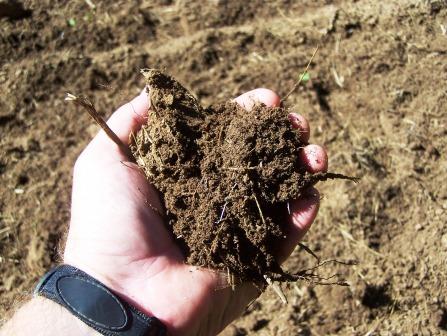
Agricultural News
NACD Testifies on Benefits of District-led Soil Health Efforts
Thu, 18 Sep 2014 11:51:13 CDT

National Association of Conservation Districts (NACD) Chief Executive Officer John Larson testified this morning at a House Agriculture Subcommittee on Conservation, Energy and Forestry hearing examining "the benefits of promoting soil health in agriculture and rural America." In his remarks, Larson highlighted the role of soil and water conservation districts in both the history and the future of the national soil health movement.
"Conservation districts are proud to be leading the way in soil health," Larson said. "Without question, we believe that soil health is the key to the future productivity of agriculture and the protection of our natural resources."
The benefits of improved soil health reach far beyond the farm. Healthy soils lead to higher water quality, by allowing for better nutrient cycling and reducing sediment runoff; a better ability to manage water and reduce flood damage; and an increase in the amount of carbon sequestered in the soil itself.
In the past several years, NACD, and its member conservation districts and associations have been working hard to put a renewed national focus on soil health. These efforts include partnering with the USDA Natural Resources Conservation Service on an integrated campaign to increase the adoption of soil health management practices by America's farmers and private landowners. By increasing the health of our soils, the campaign ultimately seeks to produce systemic, continental-scale improvements in water, air, and wildlife all while enhancing long-term agricultural productivity and providing the best return on the nation's conservation investment over the long term.
"To make measurable improvements in soil health at the national level will require a locally-led, voluntary, coordinated effort," Larson continued. "Because of their strong relationships with local landowners, as well as their strong reputation as a trusted source of conservation planning and implementation at the local level, conservation districts are well poised to continue to play a leading role in these efforts, in close partnership with local, state and federal partners."
While we are seeing improvements nationwide in both the recognition of the need for, and the adoption of, best management practices for soil health, there is still work to be done. Specifically, Larson pointed out five main areas of need for the future: 1) developing specific soil health conservation practice criteria; 2) increasing soil health research both scientific and economic; 3) training NRCS, district and partner employees; 4) ensuring Farm Bill programs facilitate soil-health adoption; and 5) communicating the benefits of soil health to both agriculture and urban audiences.
"If population growth projections are correct, in a few short decades our population will hit nine billion," Larson continued. "To feed this many people will require a significant increase in food production; and we will have to do it while coping with erratic weather conditions, and while still conserving our natural resources. We believe that the widespread adoption of soil health practices is what will make us successful. If we act now, we have a chance to make a difference on the land that will last for generations."
To view Larson's full written testimony, click here.
WebReadyTM Powered by WireReady® NSI
Top Agricultural News
More Headlines...



















